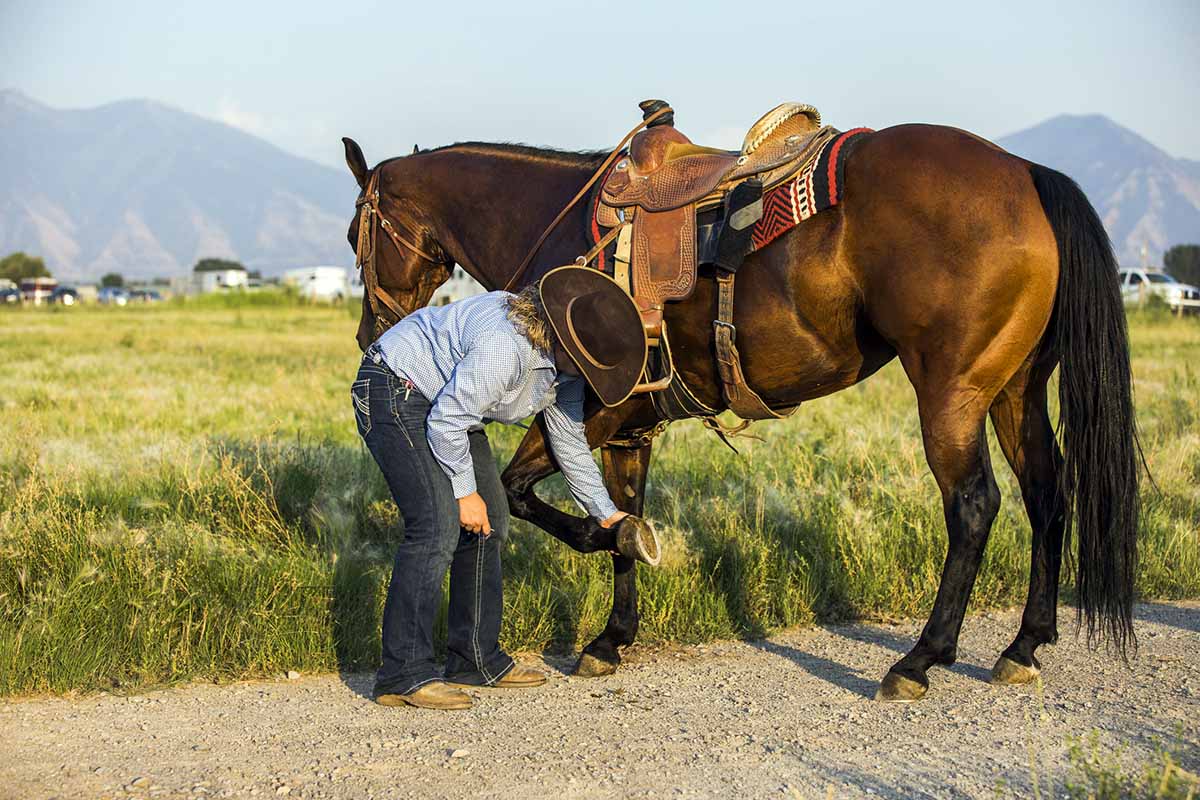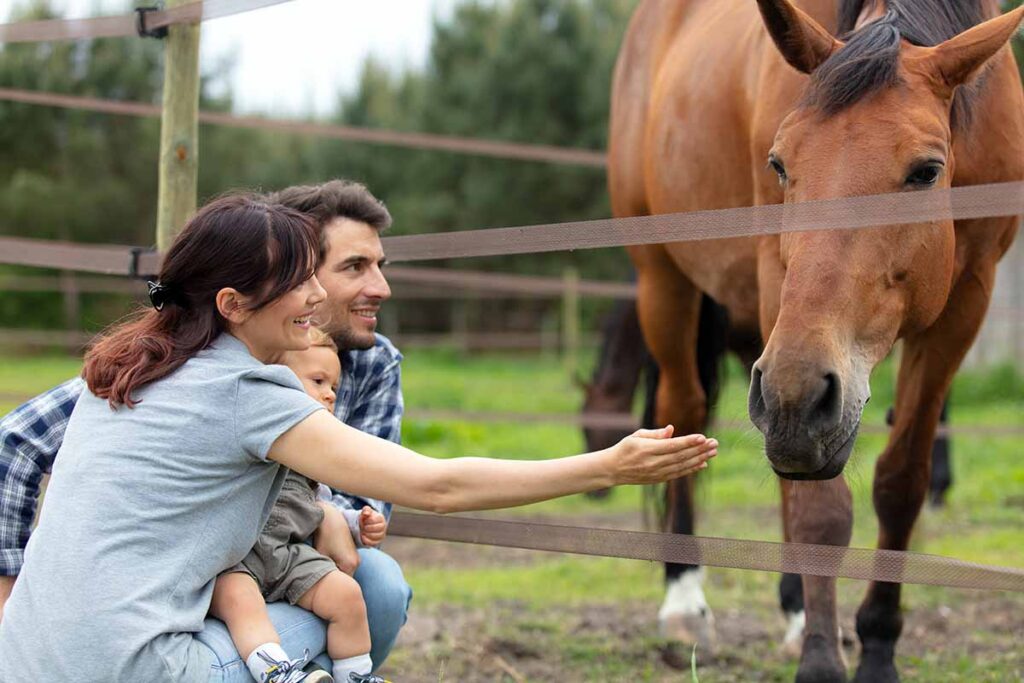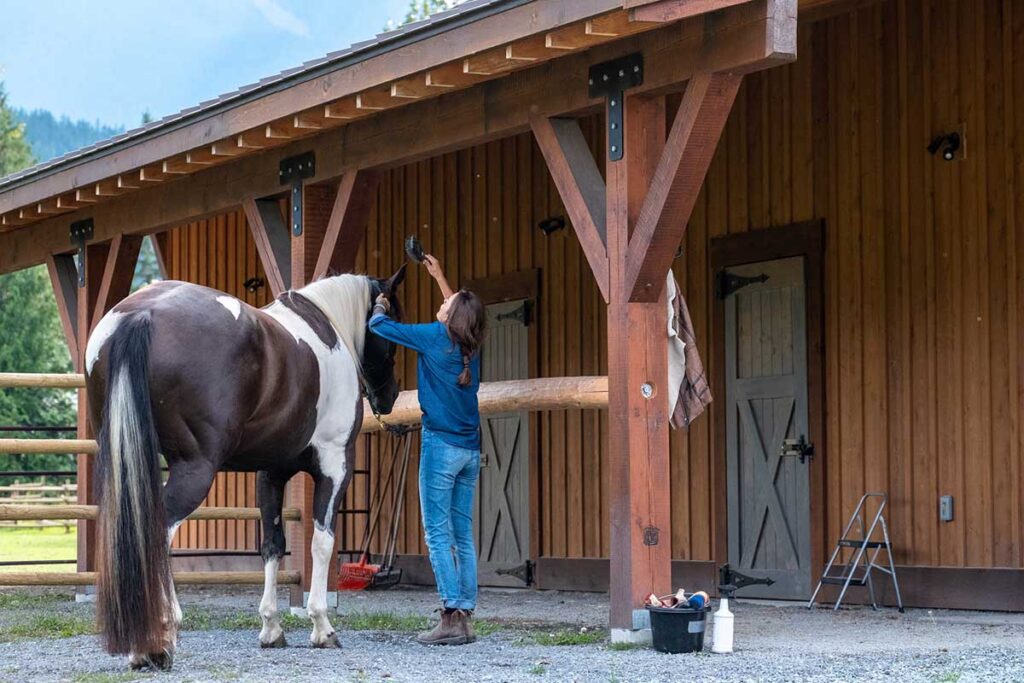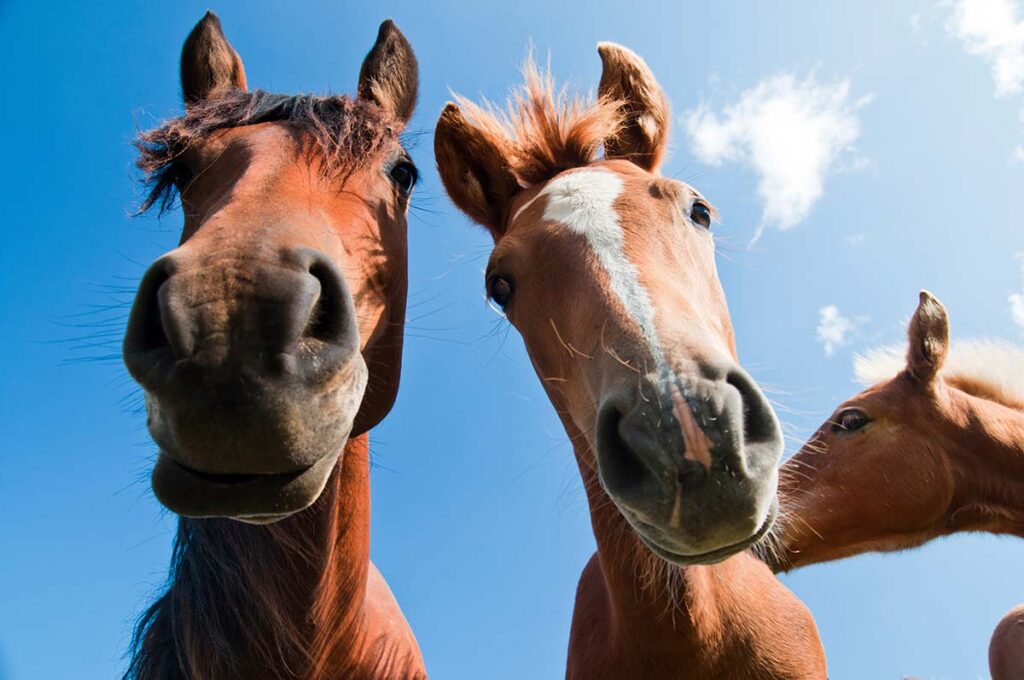Bumps, bruises, and other trauma to your horse’s feet can leave him feeling “ouchy” and foot sore. If you’ve narrowed the source of pain down to his sole, there are a couple of things you can do to help him feel better.
Things That Can Make a Horse Foot-Sore
One of the hardest structures in your horse’s foot is the sole, which protects the bottom of the foot. Ideally, the sole will be about a quarter of an inch thick with a smooth, firm but flexible texture. The thickness of a horse’s sole can vary from more than an inch to less than a sixteenth of an inch.
Common problems that can affect your horse’s soles include:
- Stone bruises: Often, by the time a hoof bruise is visible on the sole, weeks or months have passed since trauma of some sort—from rocky ground, a sharp stone, or the like—ruptured a small blood vessel in the foot, leading to a pocket of bleeding within its soft tissues. The most common cause of hoof bruises is traveling at speed over hard, rocky terrain.
- Abscess: This pocket of pus trapped within hoof tissues can be a sequel to an injury that also causes bruising. It’s important to note that abscesses are separate physiological processes than bruises that require a different approach to diagnosis and treatment.
- Thin soles: Thin, sensitive soles can put your horse’s feet at risk of bruising and abscesses. Thin soles can be caused by overtrimming and/or wet environments. Some horses, however, are simply genetically predisposed to having thin soles. Horses that bruise or abscess frequently or react to hard footing might have thin soles. Your farrier can recommend strategies that will help thicken the sole.
- Hard ground: When a horse travels frequently over hard footing, the impact of each step can cause bruising and discomfort. This is especially true for horses with thin soles or those not accustomed to such conditions. The hard surface doesn’t absorb the shock of the horse’s steps, transmitting it instead back into the foot. This can potentially lead to damage or inflammation of the sensitive structures within the hoof. Over time, repeated exposure to hard terrain (such as frozen ground in winter or stomping at flies in summer) can lead to soreness.
How Do You Deal With Sore Soles?
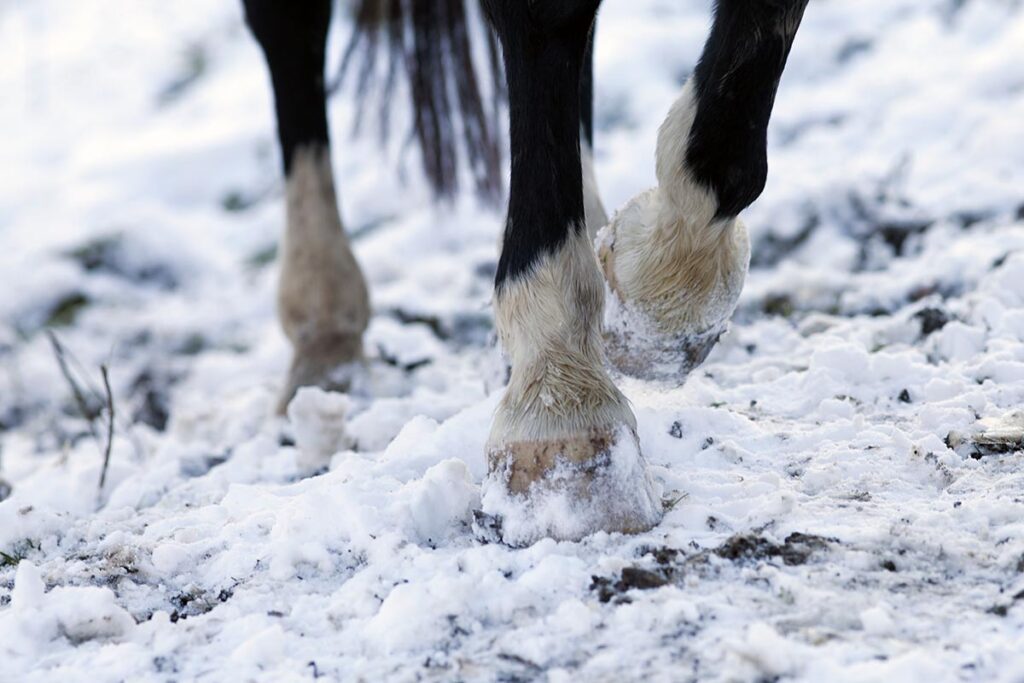
You have several options to choose from when treating a horse with sore soles. It is always best to consult with your vet or farrier first. They might be able to help you pinpoint the cause of your horse’s soreness and help you choose the most effective treatment. Some of the solutions they might suggest include:
- Adding hoof boots, shoes, or pads to give your horse’s soles additional protection, particularly on frozen ground.
- Removing your horse from wet or muddy conditions so his sole can dry and toughen.
- Adding a quality hoof supplement to help with his overall hoof health.
- Applying a topical product to help harden the sole.
- Packing his feet with a hoof packing to ease the pain associated with hoof concussion and trauma.
A quality hoof pack can be key when handling sore soles as well as preventing them. One all-natural, proven hoof-packing product many farriers and veterinarians recommend is Magic Cushion Hoof Packing. It provides fast, soothing relief for tender feet. Good for use after long rides, during travel, or anytime your horse has sore soles, it works to reduce hoof heat within one hour, while calming sole and frog inflammation and soreness. It can be used as needed or packed under a shoe and pad and left in place through the shoeing cycle.
How To Pack a Horse’s Hoof

A hoof packing like Magic Cushion is easy to apply and can used on both shod and barefoot horses. For shod horses, all you’ll need are:
- Disposable gloves.
- A hoof pick with a brush.
Barefoot hooves must be wrapped, so you’ll also need:
- Self-adhering wrap.
- Duct tape.
- A piece of coated paper or plastic, which you can easily cut from a feed bag.
To start, thoroughly clean all areas of the frog and sole, because Magic Cushion works through direct contact with the sole. Apply enough product to cover the sole and sulci of the frog. The trick is to start with a golf-ball-sized amount, then add more if necessary for larger hooves.
If your horse is shod, after packing simply place the hoof down in sawdust or shavings to seal the Magic Cushion. If your horse is barefoot, cover the packed sole with coated paper or plastic, then cover the entire hoof with self-adhering wrap and duct tape. For best results, pick the hoof out to replace the Magic Cushion every 24-48 hours until the condition improves.
Watch: How To Pack a Horse’s Hoof
This article is brought to you by Absorbine.

